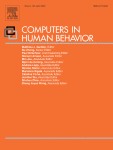
A meta-analysis and systematic literature review of mixed reality rehabilitation programs: Investigating design characteristics of augmented reality and augmented virtuality
- •
-
Researchers have shown great interest in the creation of rehabilitation programs using mixed reality (MR).
- •
-
Our meta-analysis showed that MR rehabilitation (MRR) programs produce significant improvements in users’ outcomes.
- •
-
It also showed that there was not a significant effect regarding all studied characteristics of MRR programs.
- •
-
Our systematic literature review revealed that the most common research designs are the least methodologically robust.
- •
-
MRR programs are still in the earliest stage of research, and the current results are encouraging for future development.
Researchers have shown great interest in the creation of rehabilitation programs using mixed reality (MR), which includes both augmented reality (inclusion of virtual elements in a real environment) and augmented virtuality (inclusion of real elements in a virtual environment). Due to its recent development and systematic limitations of associated studies (e.g., small sample sizes), many pivotal research questions for the study of MR rehabilitation (MRR) programs remain unanswered, and the current article seeks to answer these questions via a meta-analysis and systematic literature review. Our random-effects meta-analysis, including 29 studies, showed that MRR programs produce significant improvements in users’ outcomes, and they were significantly more effective than alternative rehabilitation programs when matched for duration. It also demonstrated that there was not a significant effect regarding all studied characteristics of MRR programs, including the incorporation of game elements, use of head-mounted displays, and task-technology fit. Our systematic literature review identified the most studied types of MRR programs, and it revealed that the most common research designs are the least methodologically robust (e.g., single group post-test only design). Our discussion suggests that MRR programs are still in the earliest stage of research, and the current results are encouraging for future development. Because none of our studied characteristics altered the effectiveness of MRR programs, we argue that characteristics that are generally consistent across all MRR programs are the drivers of their effectiveness, which can be categorized as fidelity and motivational characteristics.
This content was originally published here.


